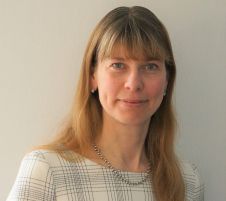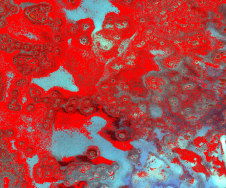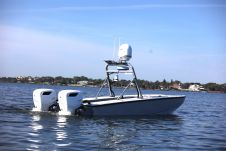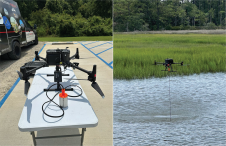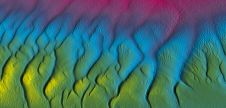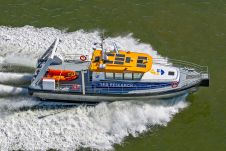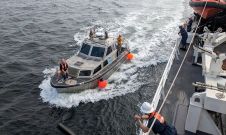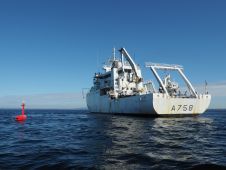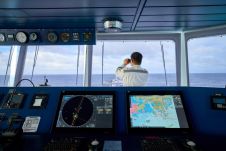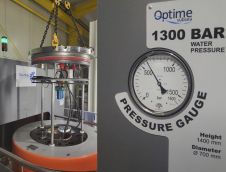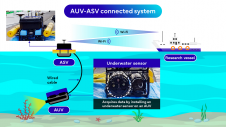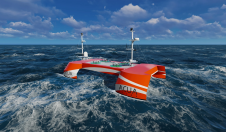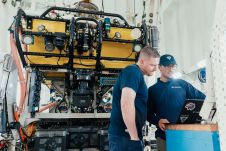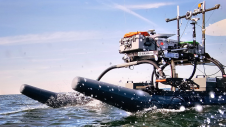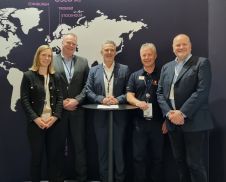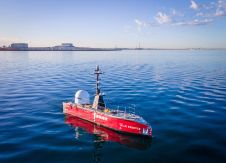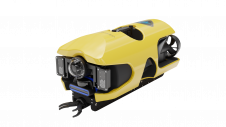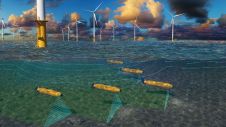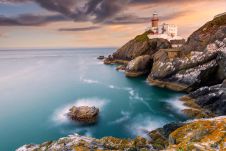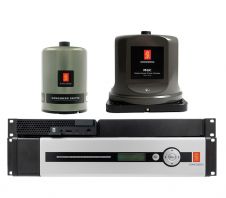FIG and Hydrography
Interview with Adam Greenland, Dep Port Hydrographer, PLA
Founded in 1878 in Paris, the Federation International des Geometres (FIG) is an international umbrella organisation for national surveying associations which covers all disciplines of the surveying profession. Commission 4 (Hydrography) has been active since 1968 and the new Chairman, Adam Greenland, Deputy Port Hydrographer at the Port of London Authority (PLA) agreed to be interviewed to enlighten our readers on the activities and importance of Commission 4.
Can you give our readers a summary of your hydrographic involvement and career?
Following a brief sea-going career, I studied Surveying and Mapping Sciences at the NE London Polytechnic. After graduating I joined Britsurvey but soon left for a permanent position with the PLA. I have been active on various RICS Committees and first became involved in Commission 4 when I attended the FIG Congress in Melbourne, Australia. In April this year I was appointed Chair of Commission 4 at the FIG XXII Congress, in Washington DC.
Can you explain briefly the work of FIG in general and Commission 4 in particular?
FIG is an established, well-recognised federation of national associations of surveyors and is the only international body that represents all surveying disciplines - about one hundred countries are represented in FIG. It is a UN-recognised Non-Government Organisation (NGO) and co-operates internationally with UN agencies and other international professional organisations in surveying disciplines. FIG technical work is led by ten commissions which prepare and conduct the programme for international congresses and annual working weeks. The day-to-day management of FIG is undertaken by the permanent office, located in Copenhagen, Denmark, working with the elected FIG Council.
Commission 4 seeks to represent all hydrographic surveyors in all disciplines throughout the world. It does this in a variety of ways, including the organising and co-sponsoring of a wide range of seminars, workshops and conferences - most recently CHC2002 and later this year Hydro2002. The work of the commission is well documented in a published work plan, full details of which may be found at www.FIG.net.
Does Commission 4 cover the entire hydrographic spectrum or specific parts of the science? Are you aiming at representing the entire hydrographic field?
Working with limited resources, Commission 4 endeavours to cover all areas and items of interest to the entire hydrographic community. With a world-wide network of National Delegates and another nine FIG technical commissions, Commission 4 is well placed to draw upon a large store of related knowledge, expertise and practical experience. At any one time Commission 4 will concentrate on a limited number of areas which are of current interest. Ideally, these will match the aims, objectives and strategy of FIG as a whole.
Some of our readers are confused by FIG and IHO Can you explain the fundamental differences between these organisations and what is the relation between their working groups?
The fundamental difference is that the IHO is an Inter Governmental Organisation (IGO) comprising of 72 member states represented by their respective national hydrographic offices. FIG, on the other hand, is an NGO, a federation of national associations of surveyors, which is managed by an elected council and administered by a General Assembly. FIG represents academic, commercial and private surveyors world-wide. FIG and IHO co-operate closely in areas such as education and technical assistance to less well-developed countries and a new MOU is being prepared that will pave the way to closer co-operation between the two organisations.
As you know, there is a world-wide shortage of competent hydrographic personnel and the number of applications by new students to Hydrographic Educational Institutes remains far below that required. How do you see the future for hydrographic surveyors? Is Commission 4 active in the field of training and education?
There will always be a need for the professional hydrographic surveyor due to the specialist skills and knowledge that are required for survey work in the marine environment. At the present time, demand exceeds supply and we need to recruit more young people. We should be seeking to attract potential recruits from a wider, more diverse background and from other, non-cognate degree programmes and be working together to raise the profile of the profession, marketing it across a broader front.
Commission 4 is an equal partner in the FIG/IHO/ICA International Advisory Board. FIG has its own Surveying Education Database and the FIG Foundation was established in 1996 for the purpose of raising funds to finance surveying education development projects and supporting young surveyors. The Commission 4 work plan includes a commitment to offer education and CPD seminars with other Commissions at FIG Regional meetings and working weeks.
What makes Commission 4 so specific? There are many organisations that represent the interests of hydrographic surveyors. What is the difference between Commission 4 and The Hydrographic Society?
Commission 4 seeks to represent hydrographic surveyors from all disciplines in all parts of the world and it is able to achieve this as FIG adopts a broad definition of a surveyor whereby membership is open to a wide variety of national surveying associations. FIG has a unique relationship with the UN and Commission 4 has formal relations with IHO and, more recently, with the ICA.
FIG has been established as an international federation for over a hundred years and Commission 4 has been in existence since 1968. The Hydrographic Society (THS) is primarily a learned society formed in 1972, of which membership is open to all and does not include any other surveying disciplines. There are areas where Commission 4 and THS overlap and could co-operate more closely together, including on such matters as education and training, best practice guides and co-ordination of events, but essentially the two organisations have evolved separately and each have a slightly different identity and rationale.
The Hydrographic Society is at present in a transitional period as it transforms itself into a federation of national societies. Couldn’t the national organisations better be integrated into FIG?
In general, individual hydrographic surveyors are well supported at a national level with many well-established and respected national hydrographic associations in existence. However, this is not true at the international level, where the interests of the IHO are governed by member states and primarily directed towards issues of nautical charting. THS is indeed in a transitional period and has responded to internal pressure for change.
The national organisations have the choice of joining FIG Commission 4, THS or both. As Commission 4 is well-established and FIG as a whole has a large and varied membership, the annual fees for becoming a national member of FIG are very modest.
In how far is (or will) Commission 4 be dealing with legal aspects, such as ‘product responsibility’?
At the present time Commission 4 is not involved in any work on legal aspects associated with the profession as a whole or with specific hydrographic products. However, I am interested in this important area and given the breadth and depth of FIG expertise and experience believe that Commission 4 could make a valuable contribution to this debate. National hydrographic societies can add their voice to these and other hydrographic issues through Commission 4 by joining FIG.
Some years ago the term ‘Geomatics’ was introduced and enthusiastic ‘Geomaticians’ tried to incorporate hydrography. Do you have any comments on this?
There has been a trend over recent years to reinvent the profession and part of this has been to group all surveyors of all disciplines under the title of Geomatics. This has been done for a variety of reasons, most notably to attract younger people into a career in surveying. I feel that it is vitally important to ensure a greater awareness of the profession amongst young people and if we can achieve that through what is essentially a marketing exercise then I am generally in favour of such an initiative.
Do you personally have a specific item you want to achieve during your term as Chairman?
My major objective is to achieve closer co-operation and increased awareness between national and international hydrographic organisations. I understand this is a long-term strategy and I firmly believe that the future of the profession lies in working together. This is a time of significant change for all hydrographic surveyors, which provides us with an opportunity to redefine our relationships.
Do you have a special message for hydrographic surveyors?
I would like to encourage all hydrographic surveyors to take the time to think carefully about the profession. We need a strong and vibrant profession that is well respected and able to make a valued contribution to the changing world we live in. In my opinion, we should be thinking in the long-term, looking specifically at how we might best collaborate in order to provide the education, training and support to achieve these goals.
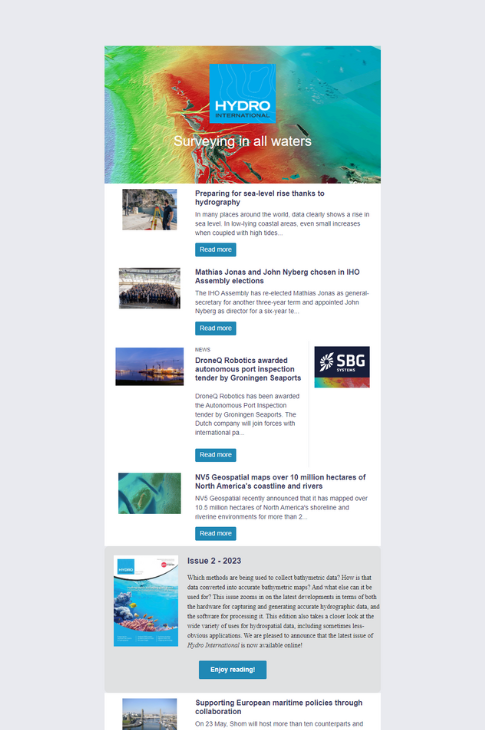
Value staying current with hydrography?
Stay on the map with our expertly curated newsletters.
We provide educational insights, industry updates, and inspiring stories from the world of hydrography to help you learn, grow, and navigate your field with confidence. Don't miss out - subscribe today and ensure you're always informed, educated, and inspired by the latest in hydrographic technology and research.
Choose your newsletter(s)


